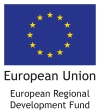LiviHeri - experiencing cultural heritage in UNESCO World Heritage towns.
Preserving the spirit of a city whilst developing tourist attractions can be a challenge. Central Baltic project LiviHeri accepted it. As a result, the project established the following tourist attractions in the UNESCO World Heritage towns of Rauma (Finland), Visby (Sweden), Kuldiga and Aizpute (Latvia).
The tourist attractions the project developed are:
- A Cup of Coffee! – local homeowners invite tourists and residents into their yards for a cup of coffee to learn about the house and the neighbourhood’s history.
- Bedtime stories – local homeowners offer accommodation to tourists. Whilst lodging, tourists can learn about the house and the neighbourhood’s history.
- Step in! A treasure hunt – walking tours along the project locations e.g. “Walk a poem along the trail” in Rauma, ”Find The Unicorn” in Kuldiga and ”A World Heritage walk through Visby”.
- Go under! Archaeological heritage – walking routes along the local neighbourhood
- Flying fish – e.g. a walking route in Rauma along the Raumajoki river.
In order to maintain and illustrate traditional handicraft skills, the project also embedded educational and knowledge sharing activities in the attractions, such as restoration workshops. These activities are collected in the project publication: “Living with Cultural Heritage – sharing experiences and knowledge around the Baltic Sea” and in the working papers: “Toolkit for joint tourist activities – A Cup of Coffee! and Bedtime stories; Toolkit for Co-Creation of Cultural Heritage Databank”. The attractions were developed both for tourists and residents alike.
The project was granted the European Year of Cultural Heritage label in April 2018. In the framework of the label, the project was portrayed in the “Connecting Cultures, Connected Citizens” booklet. The booklet portrays projects that have been granted the European Year of Cultural Heritage 2018 label. These projects also presented their activities in Brussels in October 2018 during the European Week of Regions and Cities.
- 4000 people involved in project activities
- five new joint tourist attractions


